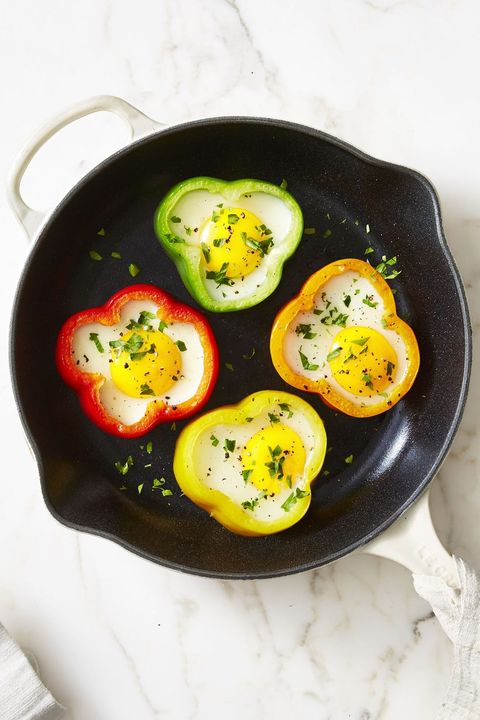what to eat and what not to eat with candida
The Candida Nutrition, suggested to help resolve yeast infection symptoms and starve the sugars that supporters of the diet claim feed Candida, has been around for decades. Merely does the diet actually work and is it safe for you to start on your own? Here's everything you need to know about the Candida Diet, including nuts on Candida overgrowth itself and foods to avoid.
What is Candida and Candida overgrowth?
According to the Centers for Disease Command (CDC), Candida is a yeast that normally lives on the skin and inside the body (more than specifically in the mouth, throat, gut, and vagina), and typically does non cause any bug. If Candida grows out of command and there is an overgrowth, information technology can cause the fungal infection candidiasis. Although candidiasis can develop in several areas of the body, most people are familiar with candidiasis in the vagina that is commonly referred to as a vaginal yeast infection. The near common species of Candida that causes infections is called Candida albicans.
What are the causes and symptoms of candidiasis?
Signs and symptoms of vaginal candidiasis tin include itching, soreness, hurting/discomfort while urinating, pain during sex, and abnormal vaginal discharge. Women who are pregnant, using hormonal contraceptives, have diabetes, have a weakened immune system, or have recently taken antibiotics are more probable to develop vaginal candidiasis. Since taking antibiotics is a frequent cause, the CDC advises women to simply take antibiotics when prescribed and exactly as your healthcare professional tells you.
How does the Candida Diet piece of work?
The Candida Nutrition is essentially a low-carbohydrate, low-sugar, anti-inflammatory diet that proponents claim tin can help promote good gut wellness and eliminate the sugars that potentially feed Candida. The diet is only intended to be followed temporarily and it is advised to reintroduce foods slowly and gradually one time the diet is finished. Although the Candida Diet has been effectually for decades, the research on it is very thin and there are no definitive findings to confirm the nutrition'south effectiveness. The diet itself should not be used as a substitute for a consultation with a dr. or qualified healthcare professional.
Proponents of the nutrition claim that Candida thrives on sugar, and although enquiry is limited on this, findings from a 2017 study suggest that college glucose concentrations may indeed promote Candida growth. The Candida diet besides restricts gluten because of thoughts that information technology may damage the abdominal lining, only there is no electric current evidence to support this for individuals who do not accept celiac disease.
Dairy products are also excluded from the diet due to an unproven theory that the sugar found in dairy products (a.k.a. lactose) can potentially increase acidity in the mouth and stimulate Candida overgrowth. And despite lack of evidence, foods with high mold content, preservatives, pesticides, or artificial ingredients are also restricted on the Candida Diet.
Candida Diet foods to eat:
- Not-starchy vegetables, ideally raw or steamed (i.e. artichokes, asparagus, broccoli, Brussels sprouts, cabbage, cauliflower, celery, cucumber, eggplant, jicama, kale, onions, rutabaga, spinach, tomatoes, zucchini)
- Depression-sugar fruits (i.east. apples, avocado, berries, lemon, lime, olives)
- Non-glutenous grains (i.e. buckwheat, millet, oat bran, quinoa, teff, almond flour or coconut flour for baking)
- Lean proteins (i.e. anchovies, bone broth, chicken, eggs, herring, wild salmon, sardines, turkey)
- Low-mold nuts and seeds (i.e. almonds, kokosnoot, flaxseed, hazelnuts, sunflower seeds)
- Healthy fats and oils (i.e. ghee, flax oil, olive oil, sesame oil, virgin coconut oil)
- Fermented foods (i.e. kefir, olives, sauerkraut, yogurt)
- Herbs, spices, and condiments (i.e. apple cider vinegar, basil, black pepper, cinnamon, cloves, coconut aminos, dill, garlic, ginger, oregano, paprika, rosemary, salt, thyme, turmeric)
- Certain sugar-alternative sweeteners, in moderation (i.e. erythritol, stevia, xylitol)
- Herbal teas, filtered h2o, and chicory coffee
Candida Diet foods to limit/avert:
- Loftier-sugar fruits (i.e. bananas, dates, figs, fruit juices, grapes, mango, melons, raisins)
- Glutenous grains (i.e. barley, rye, spelt, wheat)
- Processed meats (i.e. lunch meat, salami, spam)
- Sure fish (i.e. shellfish, swordfish, tuna)
- Sugar and saccharide substitutes (i.due east. agave, aspartame, cane sugar, corn syrup, honey, maple syrup, molasses, sugar)
- Some dairy products (i.eastward. cheese, cream, milk)
- High-mold nuts (i.east. peanuts, cashews, and pistachios)
- Condiments (i.e. barbecue sauce, horseradish, ketchup, mayonnaise, soy sauce)
- Refined/processed fats & oils (i.e. canola oil, faux butter spreads, margarine, soybean oil, sunflower oil)
- Alcoholic or sugary drinks (i.e. beer, cider, liquids, spirits, wine, diet or regular soda, fruit juices, free energy drinks)
- Caffeinated drinks (i.e. blackness tea, coffee)
Sample Candida Diet programme:
Should you try the Candida Nutrition?
Despite lack of inquiry, the Candida Diet itself is quite healthy, may provide a more nutrient-rich diet than many regularly consume, and is probable safe for well-nigh people to follow. Past eating more than non-starchy vegetables, boosting your cobweb intake, drinking more than water, eliminating refined sugars and processed foods, the nutrition itself may have anti-inflammatory benefits that are beneficial regardless of whether or non it can truly "cure" candidiasis. If you do chose to follow the Candida Diet, I recommend starting out slowly and removing things gradually from your daily routine. Commencement by limiting refined sugar or caffeine, so piece of work your way down the list. Remember that this diet is meant to be used short-term and that it is not intended to exist a substitute for a consultation with your md or healthcare provider.
This content is created and maintained by a tertiary political party, and imported onto this page to assist users provide their electronic mail addresses. You may be able to detect more information about this and similar content at piano.io
Source: https://www.goodhousekeeping.com/health/diet-nutrition/a32800213/candida-diet/

0 Response to "what to eat and what not to eat with candida"
Post a Comment